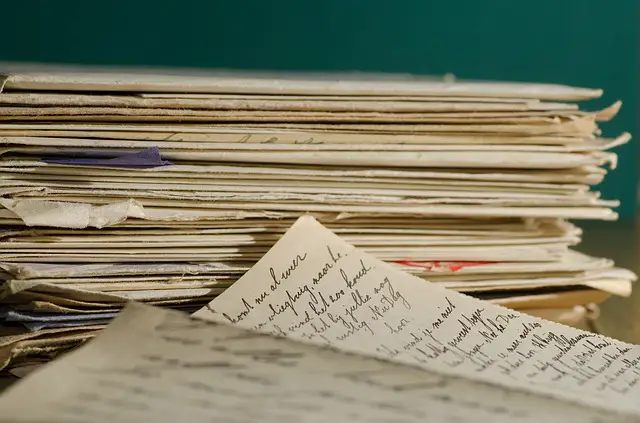Sending and receiving letters in some format or other is still a big part of everyday professional life. Although the pen-and-paper approach might be on the decline, its electronic counterpart is only gaining momentum as the world becomes more connected through the Internet. We have already covered how this shift is also changing the rules for written communication. So, in today’s post the tips on how to properly write and format letters in German, the tips are applicable for both electronic and traditional mail.
Table of Contents
Should you formal or informal German language in your letter/email?
German has huge differences depending on whether the language is being used in a formal or informal setting. In contrast to the English You which can be used for friends, relatives, and supervisors, formal German has a very different tone to informal, and choosing between du and Sie can be a daunting task even for advanced speakers.
Be sure to use Sie when just starting correspondence and, if writing with someone older, or at a higher position, always wait for them to switch to du. Not doing so can quickly make you sound impolite. Sie is also the default form for all business communication and with anyone whom you would feel not comfortable addressing by their first name. Be sure to always capitalise the first letter in Sie (and its forms in different cases).
When writing with friends or relatives, du is mostly used, unless when writing to a very distant relative. Feel free to use the first name of the person you’re writing to. Before 2005, when using the personal pronoun du, the D was capitalised as a sign of respect. After the orthography reform, this rule has been relaxed, but you may still come across some upper case Ds.
What are some opening salutations in German?
Depending on whether you’re writing in formal or informal German, consider these most popular greetings to begin with:
Formal German Salutations
Sehr geehrte Frau…, – for a woman whose name you know, or
Sehr geehrter Herr…, – for a man whose name you know.
When writing to a doctor or professor, it also pays to mention the title in the opening greeting. For example:
Sehr geehrte Frau prof. Schneider,
If you happen to not know the name of the person you’re writing to, use
Sehr geehrte Damen und Herren,.
Note that the nouns Damen und Herren are used in plural, although you’re addressing the letter to just one person. Sehr geehrte translated directly means Very honoured but serves the same purpose as Dear in English letter salutations, although it’s used exclusively in a formal context.
Informal German Salutations
Hallo…, works for both male and female addressees and is one of the most popular salutations.
Liebe…, is used if the recipient is a woman.
Lieber…, is used if the recipient is a man.
You may come across letters where the salutation is followed by an exclamation mark (!) but that is the more archaic form of writing. Today, commas are used more often.
How to write the body of your letter in German
Unlike in English, the first word following the salutation starts with a small letter. For example:
Sehr Geehrte Frau Schneider,
ich schreibe Ihnen…
There are no indentations before the next paragraph when writing a handwritten letter (the same obviously applies for emails as well).
In some regions, it’s acceptable to finish your last sentence in the body of the letter with a comma and start the concluding phrase with a small letter.
How to close a German language letter or email
As in English, you can also follow your closing statement with Your [your name].
Ihr(e) [your name] – for formal letters. Ihre is used if the recipient is female and Ihr if he’s male.
Dein(e) [your name] – for informal letters. Deine is used for female recipients, Dein for male.
With concluding phrases, you might find some of them ending in a comma and some not. This is because ending the closing greeting with a comma is not mandatory.
As with openings, the closings are different for formal and informal writing:
Formal German endings
Mit freundlichen Grüßen – this is one of the most popular and widely used conclusions for formal letters. Roughly translated to “with friendly greetings”, it applies to both known and unknown recipients.
Some other options you can use are:
Mit herzlichen Grüßen
Beste Grüße
Informal German endings
In the informal letter, there are a lot of options for the closing statement depending on whether you’re writing to friends, relatives, or lovers. Some of the most common examples are:
Viele Grüße or Liebe Grüße – these are the most common and natural-sounding conclusions used for people you have a friendly relationship with.
In Liebe – used for partners and lovers.
Other Useful Tips for writing emails and letters in German
Since German nouns have genders which behave differently in various cases, be sure to check the gender of the word you’re writing and keep a table with the different cases and their endings close by.
With the different genders, this site is a great help, since it tells you the genus of German nouns as you type. You can find a great overview of different cases here.

